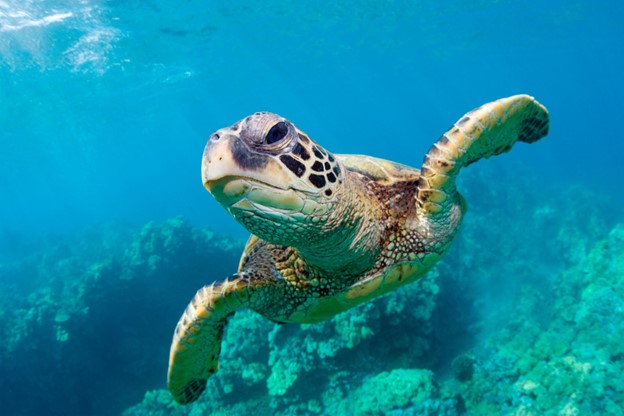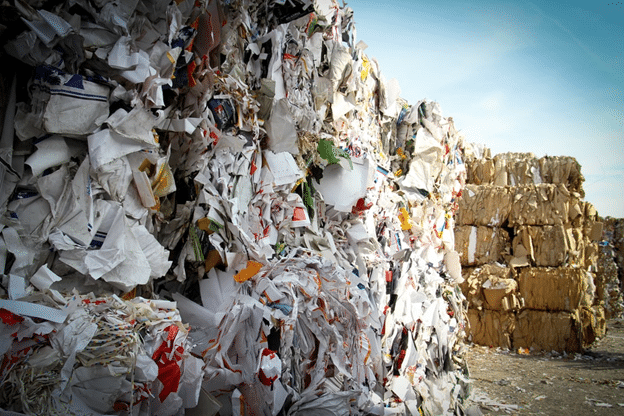
We produce a lot of waste, the bulk of which is not biodegradable and cannot be recycled. The Environmental Protection Agency (EPA) revealed that the total municipal solid waste generated in the US in 2017 alone was 267.8 million tons, an increase of 5.7 million over 2015. If we only consider plastic, only 9% of the 6.3 billion metric tons of plastic waste was recycled, according to another recent study.
This guide provides insight into the issue of waste as a source of environmental contaminants, and its impact on wildlife.
The most neglected impact of this massive waste generation is on wildlife. The trash that’s dumped in the environment proves injurious, and oftentimes fatal to birds, reptiles, and mammals. Since various types of waste do not readily disintegrate, they stay in the environment as a threat for decades.
Considering the amount of waste produced, it’s not surprising that trash is spoiling the beauty of the environment. Paper items alone constitute 40% of the garbage. Depending on the disintegration times of the garbage, the waste can last for very long periods. Some plastics, for instance, can take decades to break down, while aluminum cans do not disintegrate at all.
Litter is detrimental to wildlife in numerous ways. Broken glass can rip through the feet of coyotes, badgers, or foxes. Unbroken bottles aren’t safe either. Lizards tend to crawl inside them for food, seek protection, or bask warm interior but can face problems getting out and die of overheating. Small mammals often get their heads stuck in the opening of bottles and jars without lids. Various other plastic items, such as the plastic six-pack holders, can become traps for mammals, birds, and fish.
Some argue that litter also proves helpful to wildlife, claiming that foxes feed on leftovers from meals such as pieces of hamburgers, chicken bones, etc., from the garbage in urban areas. The same applies to pigeons that flap around food-laden garbage cans during daytime.
However, it’s important to understand that discarded human food is not necessarily good for wildlife. Various microorganisms cause the food to become contaminated, paving the way for food poisoning. Ruminants, such as deer, like to eat leftover bread and sweets, but such grain products tend to form gummy masses in their stomachs, disturbing their digestion. Ingesting too much food with a flour base can cause deer to die.
Also, all this makes wild animals accustomed to free handouts. If the source of human food is cut off at some point in time, they’ll be unprepared to hunt for food themselves.
Besides, among the gravest consequences of the global waste problem are those associated with waterways and marine life. Many aquatic animals, including, but not limited to fish, turtles, seals, and whales, end up consuming plastic or other trash. Since some species lack high acidic levels in their stomach to break down the objects they ingested, they starve to death.
Discarded fishing lines have been known to trap the wings, neck, or legs of moorhens, swans, and other waterfowl. Fishhooks can get stuck in birds’ throats. Lead poisoning is common for water birds after they accidentally swallow small lead fishing weights.
Now that you know how disastrous poor waste management proves for wildlife, let’s find out how the situation can be addressed. The idea is to start small but thinks big. There’s a need to develop local initiatives.
For instance, start by focusing on a small town that’s contributing to global waste management issues such as marine plastic pollution and is facing problems managing its waste. Once a systematic process is developed, it can be replicated in other regions.

The process should include three stages: collecting and sorting, processing, and embedding. Collecting and sorting involve eliminating plastics from the environment, especially from marine, coastal, and freshwater habitats. They must be collected at the source to prevent them from invading the environment in the first place.
Processing encompasses the measures to reuse, recycle, and generate useful products from waste. This is where companies have a role to play. With the help of experienced waste management companies, such as Titan National, they can adopt the most effective waste management solutions. These organizations use waste-to-energy plants and similar solutions to promote the use of biodegradable waste.
Companies should also consider take-back schemes for electrical products, such as batteries or pay customers to return pre-assorted waste to them.
Finally, the embedding stage presents the broadest challenge, requiring government authorities to raise awareness, educate, and train entrepreneurs and businesses, and local communities to organize and run local waste management programs. A strong human-ecological interaction needs to be established by increasing community awareness, commitment and knowledge to biodiversity and healthy habitats.
Policymakers should have the knowledge to formulate effective and long-term waste management strategies.
Also, the infrastructure and market for products, such as energy, recycled materials, and compost, need to be created.
Ensuring wildlife conservation starts with understanding the implications of poor waste management practices by individuals and organizations. Instead of viewing waste management as a surmountable problem, consider it as an opportunity to meet your sustainability goals by promoting healthy livelihoods for everyone.
By now you should have realized the impact of waste management on wildlife conservation. If you’re an eco-friendly organization looking for waste management solutions, reach out to Titan National.
To get in touch, dial 248*775*7400 now.

Titan Headquarters
1931 Austin Drive, Troy, MI 48083
Detroit Location
14860 Linwood, Detroit MI 48238

Privacy Policy | Terms of Use | Site Map | Cookie Preferences © 2024 TITAN
Site Design by LATOCKI.com | Site Development by TogoTiki.com
Privacy Policy | Terms of Use | Site Map | Cookie Preferences © 2024 TITAN
Site Design by LATOCKI.com | Site Development by TogoTiki.com